Reviews
Freddie Francis
UK, 1963
Credits
Review by Leo Goldsmith
Posted on 28 October 2010
Source Universal Studios DVD
Categories 31 Days of Horror VII
In 2007, Hammer Film Productions announced that it had risen again: under new management and for the first time since it closed up film production in 1979 (and following a stint on TV in the 80s), the famed British production company would begin filming several new pan-European horror productions, including the remake of the Swedish vampire film Let the Right One In. This return from the dead ostensibly revives a tradition of horror filmmaking that began in 1957 with The Curse of Frankenstein and continued until 1976’s To the Devil a Daughter. While Hammer had flooded the B-movie market with an exhausting number of films during those interceding two decades (psychological thrillers, cave girl pictures, and even some science fiction), by far the most popular of its productions were its horror films, launched in a variety of successful franchises (Dracula, Frankenstein, the Mummy, Jekyll & Hyde, etc.), as well as more obscure one-offs and mini-series (the Karnstein trilogy, zombie and werewolf films, and stories of witchcraft, satanism, and the black arts). Hammer’s films run the usual gamut of a production company keen on exploiting every possible facet of the macabre - from mad scientists and bosomy vampires to hippie satanists and kung-fu witch-hunters - but at their best, these films exhibit a remarkable self-consciousness and a flair for the gothic, even when the quick-and-dirty productions demand chunky stageblood, sets and effects that are less than fully realized, and absurdly exclaimed lines of dialogue from talented, but opportunistic actors like Christopher Lee, Peter Cushing, Oliver Reed, and Ralph Bates. Every Thursday throughout October, we’ll be peering into the vault of Hammer, highlighting some of our favorite films from its often sly, sometimes silly, but always sinister body of work.
Screenwriter Jimmy Sangster was one of Hammer’s major creative forces, penning a number of the studio’s franchise debuts (The Curse of Frankenstein, The Horror of Dracula, and The Mummy) and even directing a small handful films (like Lust for a Vampire). But it’s the trio of X-rated, early ’60s psychological thrillers that Sangster wrote and master craftsman Freddie Francis directed - Paranoiac, Nightmare, and Hysteria - that represents a particular high point for both studio and screenwriter. Self-consciously scaling back the bloody mayhem and monster madness for rather more subdued, refined chills, these films recall the elegant chiaroscuro of the studio’s stylish noirs of the 1950s—and somewhat unsubtly call to mind Hitchcock’s then-recent Psycho. But the films also make vivid Hammer’s connection to the English gothic tradition, a nuance that would set their films apart in the genre and would help instill even their silliest efforts with a certain degree of credibility.
The first of these films, Paranoiac is anything but silly. Set against the picturesque cliffs and countryside of Dorset, and shot in textured black-and-white CinemaScope, the film weaves an intricate, creepy tale of madness at the manor that’s richer than your average B-film. The plot concerns the Ashbys, an aristocratic family marked by tragedy: some years before the film’s events, we are told, Lord and Lady Ashby were killed in a plane crash, a catastrophe compounded by the subsequent suicide of their fifteen-year-old son Tony. In the wake of these events, the remaining children, Simon and Eleanor, were left in the care of Aunt Harriet to wait out the days until their inheritance kicked in—and to go variously batty. Eleanor, in perpetual trauma from beloved Tony’s death, is infirm and in care of a French “nurse”; Simon drinks his weight in brandy and careens around town in his MG, making snippy comments and getting into trouble; and Aunt Harriet, while seeming to put up with it all, also maintains the haggard glare of the evil stepmother.
This set-up makes plain one of Hammer’s (and, indeed, Britain’s) well-worn themes: class. The studio’s films are bursting with high-booted, toffee-nosed sadists who lure women back to their manors, summon evil spirits, and generally piss on the proletariat. This usually makes way for a kind of socialist return of the repressed, in which the peasantry takes its revenge in monstrous form (cf. The Plague of the Zombies and The Curse of the Werewolf), but Paranoiac injects some grace into this formula, taking a closer look at the corruption of moral and mental stability within the nobility. Simon, played by a young and brilliant Oliver Reed, is a truly mercurial monster, flashing seductive grimaces one moment, spitting out vicious, drunken comments the next, and finally devolving into raving lunacy. Eleanor, by contrast, is more sympathetically rendered, shell-shocked by personal tragedy and given to more pitiable moments of madness. When she begins seeing Tony’s now-grown-up figure lingering around Ashby Hall, our sense of identification is unsettled: is this part of an evil plot by Simon to drive Eleanor truly mad and thereby usurp her inheritance? Or is Eleanor simply crazy?
This manipulation of perspective, unsettling the audience’s ability to discern whose point-of-view to trust, is what places Paranoiac squarely in the realm of the gothic, as both the literary and cinematic modalities of the genre rely on a certain manipulation of perspective. Since Ann Radcliffe’s novels of fanciful, hallucinating young ladies with wild imaginations and hysterical dispositions, the gothic narrative has consistently played with the reader’s (or viewer’s) point-of-view and understanding of reality versus fantasy. In film, the narrative focalization of the gothic can make this obscuring of subjectivity still more unsettling by exploiting the ambiguity of the camera’s point-of-view, and so many of the shots in Paranoiac make ambiguous whether the camera is omniscient or adopts a character’s viewpoint (like Tony’s). This makes even the meaning of the film’s title obscure: virtually any of the main characters could be the titular paranoiac—as could, in some sense, the film’s viewer.
This is largely thanks to Freddie Francis, whose remarkable career as a director of a number of films for Hammer (including Dracula has Risen from His Grave) as well as their competitors (like Tigon Pictures’ masterful The Creeping Flesh and Amicus’ Tales from the Crypt) is bested only by his truly legendary career as a cinematographer. He was Jack Cardiff’s cinematographer of choice on his adaptation of Sons and Lovers, and later revived his career at the lens with Lynch’s The Elephant Man, Dune, and The Straight Story, and Scorsese’s Cape Fear. Having more than earned his credibility by filming Jack Clayton’s 1961 gothic masterpiece The Innocents, Francis must have seemed the ideal choice to handle Sangster’s eerie psycho-thriller, and while Francis left Paranoiac’s shooting responsibilities to Hammer mainstay Arthur Grant, his sense of style and space are fully present, with exactly the sort of circuitous camera movement to match the film’s labyrinthine shifts in mood and viewpoint.
But even with style to spare - not to mention a view of upper-class twittery at its most dark and perverse, complete with creepy organ music and the appearance of a masked, malevolent pint-sized figure in a choirboy’s cassock - the film would still be very little without the presence of Ollie Reed. His puckish and pickled Simon - with brash, Withnailian declarations of “I shall probably get drunk!” - matches his performance in Joseph Losey’s Hammer outing These Are the Damned the same year with its bratty, hypersexual menace. Some of this same tenor is on show in his titular performance in Hammer’s otherwise lackluster Curse of the Werewolf, but the undertones of effete, high-class entitlement are a million miles from his turn as Oliver!’s purring villain Bill Sikes (or even his cycle of films as Ken Russell’s muse) later in the decade. Simon’s frighteningly bipolar dipsomania - presaging many a drunken chat-show appearance by Reed later in his career - is the spark that turns this sinister, stately chamber horror into something truly disturbing.
More 31 Days of Horror VII
-
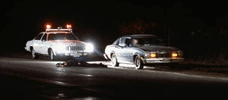
The Thin Blue Line
1988 -

The Ninth Configuration
1980 -
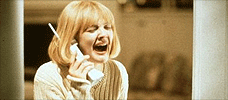
Scream
1996 -
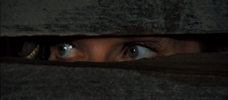
Dying Room Only
1973 -
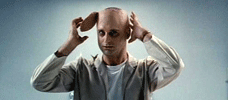
Brain Dead
1990 -
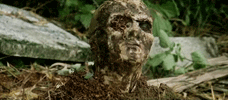
Zombi 2
1979 -
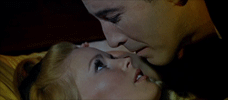
Dracula Has Risen from the Grave
1968 -
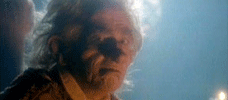
The Storyteller
1988-1989 -
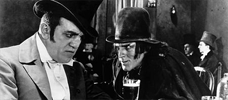
Dr. Jekyll and Mr. Hyde
1920 -
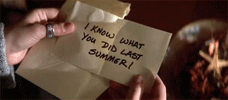
I Know What You Did Last Summer
1997 -
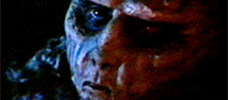
Don’t Be Afraid of the Dark
1973 -

Dark Age
1987 -
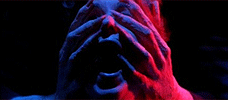
Inferno
1980 -
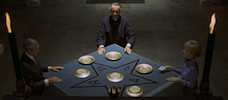
To the Devil a Daughter
UK / West Germany -
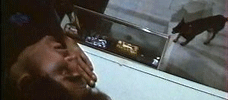
Trapped
1973 -
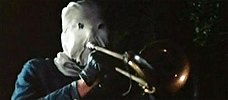
The Town that Dreaded Sundown
1976 -
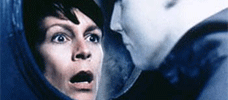
Halloween H20: Twenty Years Later
1998 -

Killdozer
1973 -
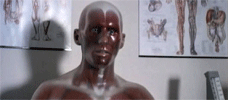
Pin
1989 -
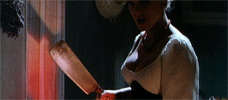
Frankenstein Created Woman
1967 -
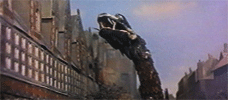
Reptilicus
1961 -
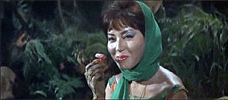
Matango
1963 -
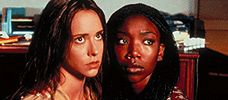
I Still Know What You Did Last Summer
1998 -
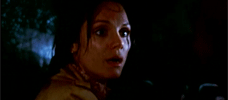
Night Terror
1977 -
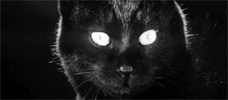
Kuroneko
1968 -

Demons
1985 -
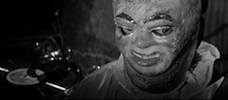
Paranoiac
1963 -
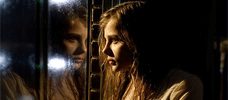
Let Me In
2010 -
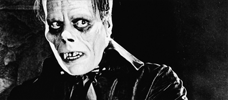
The Phantom of the Opera
1925
We don’t do comments anymore, but you may contact us here or find us on Twitter or Facebook.



